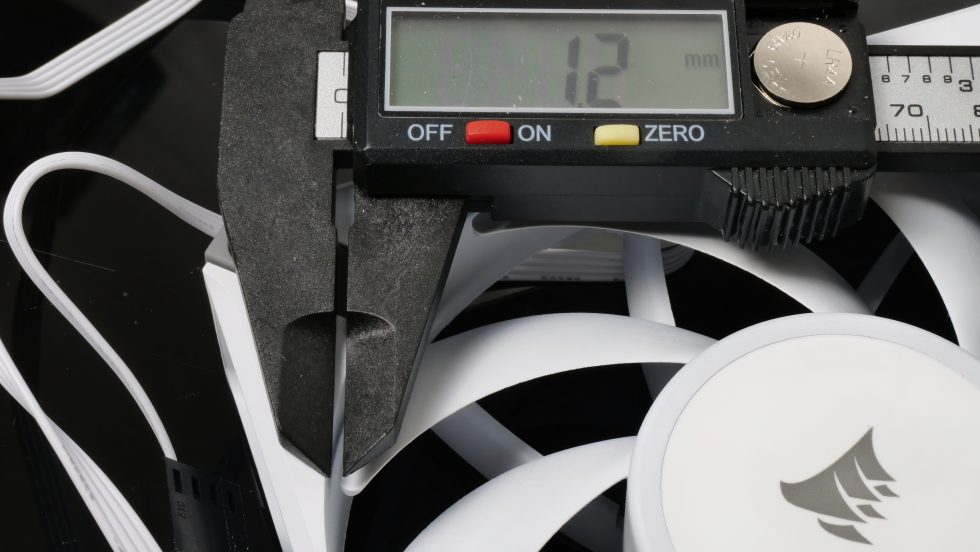I had to let it sink in that Corsair now offers good fans without RGB again. No iCUE, no controller clutter, instead just a plain (but highly pure) white or a nice, exciting black. Bling-bling is not even available for a surcharge and the current street price of just under 24 Euros leaves you in the dark. Fiat Lux? No one needs it if the fan is allowed to concentrate on its actual task. And that’s exactly what it does. Thanks for this!
The manufacturer offers both fan sizes, i.e. the AF120 and the AF140 in two colors, but we’ll stick with the smaller, because more common, diameter for today’s test first. RGB is not even available on the AF Elite for a surcharge, and that is a good thing – also for the price, since the big one is available for just 1 euro more. Without light also has advantages, because both the hub (weight) and the electronics (noise) are unencumbered, as well as the absence of the illuminated ring, which could negatively affect the radiator diameter, go on the credit side. The fan thus concentrates on what it is primarily supposed to do: realize good, but quiet ventilation. We can only praise the fact that Corsair finally does something for the light-shy people after all the high-priced bangers. And yes, the white is a true white and not a light gray copy.
The black or white frame is functional and simple, has a useful decoupling and for the optimized and well-focused airflow, one has even angled the struts of the stator to the motor mount and set at an angle. What this brings (or not) we will see later, of course, in the measurements.
The rotor with its 9 rather steeply pitched and curved blades is not a great innovation in purely visual terms, nor is the usual 4-pole motor. But you don’t always have to turn the tried and true upside down. The fan relies on a good hydrodynamic plain bearing (FDB), which does exactly what it’s supposed to. If you want to know all the technical details, I refer you to the specifications at the end of the page. However, I will have various comments later on the engine noises, which occur independently of the bearing, up to the teeny-tiny humming in a single rpm range.
The weight of only 190 grams is appropriate. The manufacturer specifies the thickness (installation depth) as 25 mm, which is even true. The maximum gap of 1.2 mm between the rotor and frame is excellent and the surface finish is definitely not objectionable, even if the rotor blades could have been deburred better. The power consumption turns out quite high at full speeds with well over 4 watts for the fan at maximum speeds in the spec sheet, but it is not even half that in reality. Corsair has probably made a printing error here. But I’ll get to all the details in a moment, especially since I can already spoil that the given specifications are even exceeded in places.
By the way, one also supplies the usual 4 screws, there is nothing more. Well, you also do not need more.
Technical data
On the next page you will first see how and what we test and why. Understanding the details is incredibly important in order to be able to objectively classify the results later. The differences between many models are more in the details and the best fan for all situations can hardly exist. There is a certain optimum in every situation and, of course, good all-rounders. But they usually have their price. However, if you are planning very specifically with 60 mm radiators, for example, you might be able to save money by choosing the best model for your intended use, which might not perform so well as a case fan. And vice versa, of course.










































16 Antworten
Kommentar
Lade neue Kommentare
Urgestein
Veteran
Urgestein
Urgestein
Urgestein
Urgestein
Urgestein
Moderator
Veteran
Urgestein
Urgestein
Urgestein
Veteran
Veteran
Urgestein
Alle Kommentare lesen unter igor´sLAB Community →